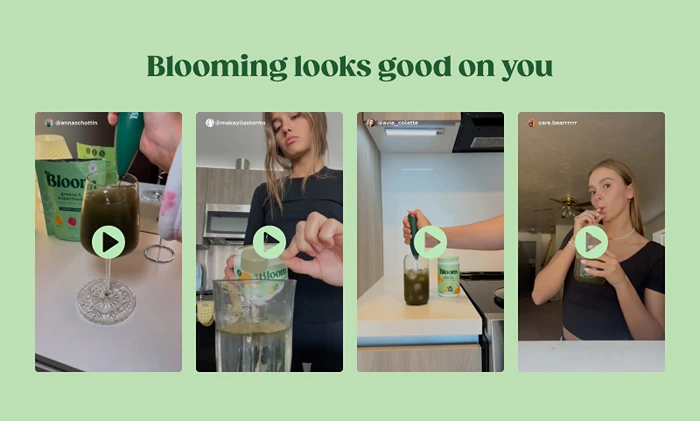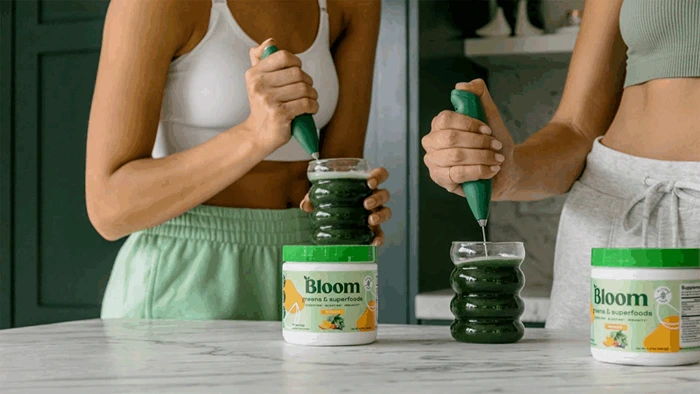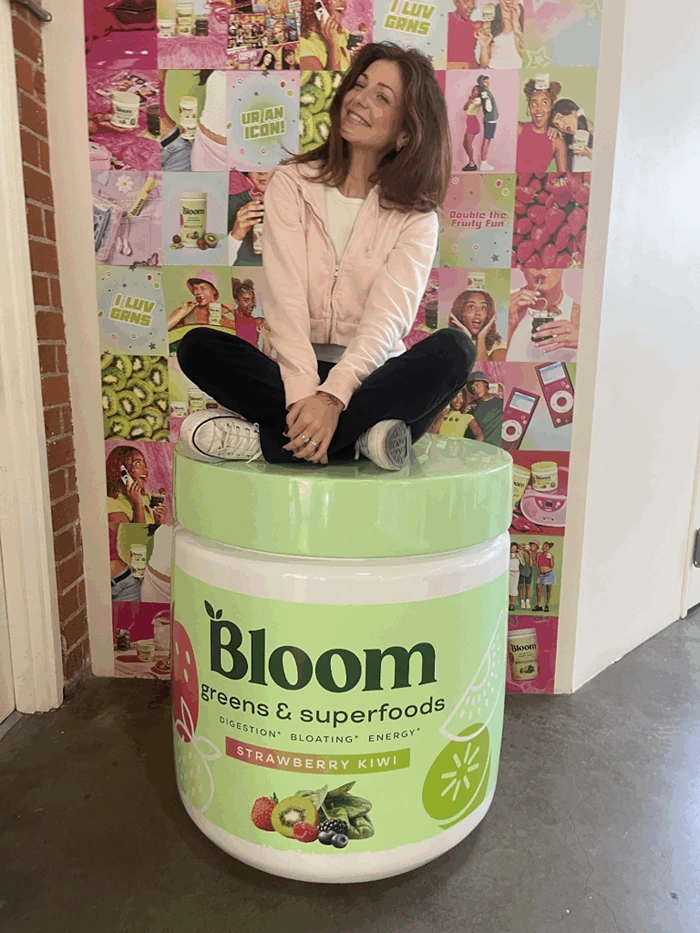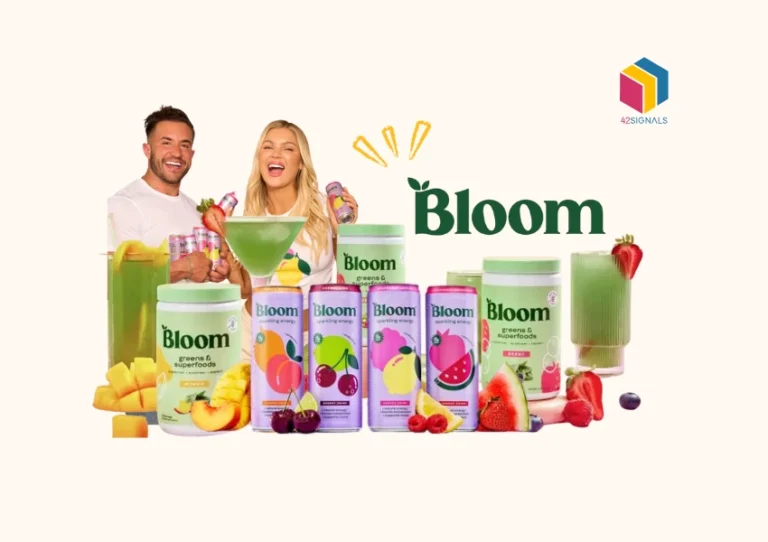Table of Contents
Toggle** TL;DR ** Bloom Nutrition’s meteoric rise from a 2019 startup to a $170 million empire wasn’t luck; it was a masterclass in modern marketing. Founded by influencer Mari Llewellyn, the brand leveraged her authentic community to generate a tidal wave of user-generated content and strategic micro-influencer partnerships, making their greens powder a viral sensation on TikTok and Instagram. This digital hype was then solidified by a smart omnichannel strategy that placed products on Target and Walmart shelves, building legitimacy and accessibility, while a subscription model turned casual buyers into loyal subscribers, creating a powerful, sustainable business engine that transformed a simple supplement into a cultural wellness phenomenon.
Let’s paint a picture. It’s 2019. The wellness industry is already packed to the gills with green powders. You can’t swing a reusable grocery bag without hitting a jar of grassy-tasting supplements promising eternal youth and boundless energy. So, what would make you think another one could not just survive, but absolutely dominate? This is the seemingly impossible question Mari Llewellyn and her husband, Greg LaVecchia, asked themselves. And their answer, a brand called Bloom Nutrition, didn’t just succeed; it became a verb. “Have you Bloomed today?”

Image Source: Ship Bob
You’ve almost certainly seen it. The vibrant green powder, the satisfying shhht of the seal breaking, the ritualistic shake in a branded shaker bottle. It’s a aesthetic that has flooded TikTok and Instagram, making it easy to dismiss as a fleeting trend. But that’s where most observers get it wrong. The viral clips are just the surface-level confetti. Dig deeper, and you find a shockingly robust business engine—a case study in how to build a modern brand from the ground up, turning a commodity into a community and scaling it to a staggering $170 million in revenue.
This isn’t a story about a lucky break. It’s a blueprint. It’s about understanding the subtle shift in how we shop, how we trust, and what we want from the products we let into our lives. Let’s tear down the Bloom playbook, not just to admire it, but to understand what makes it tick.
So, What Is Bloom Nutrition, Really?

If you’re not part of the core demographic, you might still be wondering, what is Bloom Nutrition? On paper, it’s simple. Founded by fitness influencer Mari Llewellyn and Greg LaVecchia, Bloom’s flagship product is “Greens & Superfoods,” a powdered blend of vitamins, probiotics, digestive enzymes, and antioxidants. Its job is to be a nutritional safety net for people who know they should eat more greens but find the reality of chopping kale every morning a bit… ambitious.
But to define it by its ingredients list is to miss the point entirely. Bloom Nutrition isn’t selling powder; it’s selling a feeling. It’s selling the satisfaction of checking a wellness box before you’ve even finished your coffee. It’s selling the idea that self-care can be quick, easy, and even tasty. In a market where many products tasted like liquified lawn clippings, Bloom’s masterstroke was its obsessive focus on flavor. Mango, Sweet Cherry, Tropical—these weren’t afterthoughts; they were the main event. They understood that for a habit to stick, it can’t be a punishment. This focus on user experience was the first crack in the foundation of the established supplement market, and Bloom expertly pried it open.
The Engine Room: A Social Media Strategy That Didn’t Feel Like One

Every company has a social media marketing strategy now. But most feel exactly like what they are: a content calendar managed by a marketing team. Bloom’s approach was different. It felt organic because, especially in the beginning, it largely was organic.
Mari Llewellyn didn’t start as a CEO; she started as a creator. She had a built-in, highly-engaged audience who followed her fitness journey and trusted her recommendations. When she launched Bloom, she wasn’t introducing a foreign corporate entity; she was sharing her next favorite find with her friends. This authenticity was the spark.
The strategy evolved into a brilliant amplification of user-generated content (UGC). Instead of pouring millions into traditional ad buys, they built a brand that people wanted to film. The product was visually distinctive (that bright green color), the ritual was satisfying to watch (the shake and sip), and the results were easy to talk about. They encouraged their community to share their “Bloom moments,” effectively turning their customer base into a massive, unpaid, and incredibly credible marketing department.

Why did this work so well? We’ve become ad-blind. We scroll past sponsored posts with practiced ease. But we stop to watch a college student talk about how it helped her energy during finals, or a new mom share how it’s her one minute of wellness in a chaotic day. That doesn’t feel like an ad; it feels like a recommendation from a peer. Bloom’s genius was in building a system that systematized authenticity, creating a wave of social proof so powerful it became self-sustaining.
The Megaphone: Why Bloom Nutrition’s Influencer Partnerships Hit Different
Of course, you can’t talk about Bloom without talking about influencer partnerships. But again, their approach was nuanced. While they certainly worked with mega-celebrities like Kylie Jenner for explosive, headline-grabbing moments, their true groundwork was laid by a vast army of micro and mid-tier influencers.
This is a far smarter, more economical strategy than it might appear. A celebrity gets you eyes, but a micro-influencer with 20,000 dedicated followers gets you trust. Bloom targeted creators in specific niches: fitness, motherhood, college, and general wellness. This meant that no matter who you were, your algorithm would eventually serve you a Bloom video from someone you genuinely related to.

The key was authenticity. Bloom didn’t demand rigid, corporate-approved scripts. They gave creators the freedom to integrate the product into their daily lives naturally. It appeared in “get ready with me” videos, morning routine vlogs, and “what I eat in a day” content. This seamless integration was everything. It felt less like a sponsorship and more like a genuine endorsement, a product they actually used. This tiered strategy allowed them to dominate countless niche communities simultaneously, creating a pervasive sense that “everyone” was using Bloom.

The Leap of Faith: Taking an Online Brand into the Real World

This is where many DTC (direct-to-consumer) brands stumble. They build a passionate online following but remain a digital ghost—something people see on screens but never touch in real life. Bloom avoided this trap with a decisive and crucial omnichannel retail strategy.
After building crushing demand online, they made their products available on the shelves of Target, Walmart, and CVS. This move was a masterclass in legitimacy and accessibility.
Think about it from a consumer’s perspective. You see a product online, but you’re hesitant. Is it legit? Will it taste bad? What if I waste my money? Seeing it in a trusted retailer like Target instantly erases those doubts. Its physical presence acts as a stamp of approval. Furthermore, it triggers impulse buys. You’re doing your weekly shopping, you see the iconic white canister, and you toss it in your cart. That transition from online curiosity to in-hand purchase is frictionless.
This omnichannel retail approach is no longer a luxury; it’s a necessity for survival. It acknowledges that the customer journey isn’t linear. It’s a messy, multi-platform path, and Bloom made sure they were waiting at every possible turn.
The Genius of the Subscribe & Save Model

Image Source: Entrepreneur
Acquiring a customer is expensive. Keeping one is profitable. Bloom’s subscription model is the engine of their remarkable customer loyalty and predictable revenue.
The “Subscribe & Save” option is a psychological and economic win-win. For the customer, it offers a discount and the ultimate modern luxury: convenience. You never have to remember to reorder; it just shows up at your door, seamlessly integrating into your routine. For Bloom, it’s the gift that keeps on giving. It guarantees recurring revenue, dramatically increases the lifetime value of each customer, and builds a habit that is notoriously difficult to break.
A subscriber isn’t just a buyer; they’re a member. They’ve made a small but meaningful commitment to the brand, moving it from a one-time experiment to a staple in their wellness cabinet. This creates a stable financial foundation that allows for aggressive growth and expansion into new products.
The Good, The Bad, and The Real: Sifting Through Bloom Nutrition Reviews
With hype of this magnitude, a critical eye is essential. Do the products actually work? The answer, as with most supplements, is: it depends. A deep dive into Bloom Nutrition reviews reveals a spectrum of experiences, and listening to them is crucial for a balanced view.

Image Source: Amazon
The overwhelming positive sentiment centers on two things: taste and digestibility. Compared to the bitter, gritty alternatives, Bloom is consistently praised for being actually enjoyable to drink. Many users report positive effects like more stable energy levels, less bloating, and improved regularity. For them, it’s a simple, effective tool that makes them feel better.
However, the critical Bloom Nutrition reviews are important to note. Some people report feeling no different at all. A smaller subset mentions digestive upset or that the sweetness (from stevia) is off-putting. It’s vital to remember that supplements are not one-size-fits-all. Your biochemistry, diet, and lifestyle all play a role. The sheer volume of positive UGC, however, acts as a powerful counterweight to skepticism, creating a perception that it works for the majority.

The Other Side of the Bloom: Challenges and Considerations
No brand review is complete without looking at potential headwinds. Bloom’s success has inevitably bred competition. The market is now flooded with clones and competitors employing identical strategies. Maintaining their differentiation will be an ongoing battle.
Furthermore, the brand is intrinsically tied to the platform that built it: TikTok. Shifts in the algorithm, changes in user behavior, or simply the fickle nature of viral trends pose a inherent risk. Their focus on expanding into retail and building a direct subscription base is the correct hedge against this, but the dependency remains a part of their story.
The Takeaway: What Every Business Can Learn from Bloom
The Bloom Nutrition story is more than a success story; it’s a modern business textbook.
- Product Experience is King: You can’t market a bad product to success. Their focus on taste was a non-negotiable product innovation that disrupted the category.
- Authenticity is the Currency of Trust: They built a community, not just a customer list. By leveraging real people and real stories, they built a level of trust that advertising cannot buy.
- Meet Customers Where They Are: Their omnichannel retail strategy acknowledged that the modern customer journey is complex and multi-channel. They removed all friction to purchase.
- Build a Routine, Not a Transaction: The subscription model locked in loyalty and created a predictable business model, ensuring long-term health beyond viral moments.
Beyond the Hype
Bloom Nutrition’s journey from zero to $170 million is a powerful testament to the new rules of brand building. It proves that with a great product, a deep understanding of community, and a strategy that blends digital buzz with physical presence, even the most crowded markets have room for a new leader.
They didn’t just sell a green powder; they sold an identity, a ritual, and a sense of belonging. They transformed a daily chore into a shareable moment and built an empire one shake at a time.
The Bloom effect shows that in today’s world, the most powerful marketing doesn’t look like marketing at all. It looks like a friend, telling you about something they truly love.
If you liked this article, read –
Mario Badescu: The Cult Beauty Brand Masterclass in Authenticity & Smart Pricing
The Labubu Frenzy: How a Mysterious Monster Became the $2B Collectible Empire
Quaker Oats’ Pricing Strategy: Balancing Affordability and Premium Positioning
Kellogg’s Cereal: How They Dominated the Breakfast Aisle
Coca-Cola’s Pricing Playbook: Lessons in Global Brand Strategy
Frequently Asked Questions
Bloom Nutrition is a wellness and supplements brand known primarily for its Greens & Superfoods powder.
Some of its strengths:
It offers a mix of over 30 plant-based ingredients, including fruits, vegetables, probiotics, and digestive enzymes, which can help fill dietary gaps when you don’t get enough nutrients from food.
It appears to support digestion and may reduce bloating for some users.
It’s designed to be enjoyable in taste (flavored options), which helps people stick with using it regularly.
However, it’s not without limitations. For example, some reviews point out that:
The amounts of certain nutrients aren’t always clearly disclosed.
It’s not a replacement for whole foods—i.e. it might help supplement your diet but should not be the sole source of nutrition.
So whether it’s “good” depends a lot on your goals (nutrient boost, digestion support, etc.) and what else your diet contains.
Here’s what the Bloom Greens & Superfoods powder claims or is likely to help with:
Improves digestion: Thanks to enzymes, prebiotics, and probiotics that support gut health.
Reduces bloating: Some of the ingredients are intended to help with bloating and digestive discomfort.
Energy support: The blend of superfoods, vitamins, antioxidants may help boost daily energy levels.
Nutrient supplementation: Helps fill in gaps in your daily intake of fruits, vegetables, and other beneficial plant-based nutrients.
No, Bloom is not specifically a weight loss drink. It is a greens and superfoods powder supplement, not a formula designed for weight loss.
Some people may notice changes like reduced bloating or feeling lighter, which might create the appearance of weight change, but those effects are more about water retention, digestion, or gut comfort, not fat loss.
The CEO (and co-founder) of Bloom Nutrition is Greg LaVecchia






